CompareGuru Financial Services is an authorised financial services provider FSP. 47696
Municipality bills are often a nightmare to decipher. You might not be entirely sure what you're being charged and why - so we put together a handy guide to help you avoid any pitfalls.
The dreaded municipal bill is a key form of communication between local government and its citizens. Just how effective this communication is can be determined almost entirely by the consumer's understanding of that municipal invoice.
Therein lies the problem. Here in South Africa, invoices just aren't standardised, despite repeated efforts to get this rectified. Municipal bills are often:
- Barely legible;
- Barely understandable;
- Non user-friendly;
- Non customer-orientated;
- Nausea inducing, if you stare at them for too long.
There's no shame in admitting that most of us don't understand what's happening in these bills. We know for sure that we're being robbed in some foul way, but we don't know how.
This lack of understanding is dangerous, for reasons both obvious and dubious, and the previous paragraph is a prime example of why.
It breeds distrust. We don't know if what we're seeing is correct. We refuse to pay.
And this, coupled with large amounts of government incompetence and a 90k KFC bill, is why our municipalities are drowning in debt.
Furthermore, all the obfuscation has a negative effect on the customer's awareness and regulation of use, and does little to reduce our energy and water footprint. Bearing in mind that no two municipalities issue identical bills, there's almost no information on consumption, no communication on conservation and nothing is learnt.
Until these invoices improve, they will never function as intended and customers will continue to struggle in fully understanding them.
So, let's take a look at the problem with municipal bills, and see if we can break them down.
Firstly, What Is This Bill About?
Most South Africans should know all about municipal bills. If you live in a house and have access to electricity, water and waste removal services, then you should receive a monthly bill from your local municipality, the amount payable depending on your usage.
As previously stated, no two municipalities issue identical bills, but all of the basic information should remain the same.
This information should include:
- Your name and address;
- The invoice and VAT number;
- Your account number – used as reference for when you make payment;
- Contact details for the municipality, as well as the VAT numbers for all service providers;
- The date, which indicates the month owing. You should always check this to ensure that you are paying for the correct statement;
- The total amount due, as well as the due date. If you're being invoiced for January, for example, your due date would be before the end of January;
- A PIN, used if you would like to access the electronic version of your invoice;
Most invoices should issue you with itemised billing – meaning that the cost of each and every service is laid out clearly. Some municipalities, however, do not do this, and it's incredibly irritating. We'll go into this a little more below.
One of the biggest problems, as mentioned at the beginning of this article, is that consumers just don't understand what's happening on the invoice. You may be provided with a bunch of information, but there's no way to decipher it. Worse yet, with the state of government as it is, it's safe to assume that every now and then you'll be billed incorrectly.
The Problem With Municipal Bills
High municipal bills have been irritating South Africans for some time, particularly in Cape Town with the water problems. So, it's imperative that we understand the bill we're receiving, and know what we're paying for. The ordinary South African struggles to find the right information on a municipal invoice. While the basics may be there, we may find it illegible or confusing. Some info you may be searching for, but unable to find, could include:
- Amount owed from previous months;
- The date of the meter reading;
- Water usage. Yes, believe it or not, some invoices just don't tell you how much you've used.
Some other elements which make the invoice confusing:
- The use of numbers without the unit, such as R or Kl – leaving the consumer to wonder if what they're reading is an amount owed or an amount used;
- Some might not understand the difference between Litres and Kilolitres;
- The use of codes which are entirely meaningless to the customer;
- Usage of acronyms or abbreviations which nobody understands, such as w, cons, bas or char;
- Even the most educated of consumers may find it difficult to figure out the meaning of certain terms, such as remittance advice, rebate, opening balance, balance brought forward, etc.
Understanding Terminology On Municipal Bills
Something else to note is that not all municipalities will bundle water, electricity and other charges, such as refuse removal, onto one bill. Sometimes, you'll receive more than one invoice, and just like municipal bills will differ in appearance from city to city, they also make use of different terminology. Which is senseless, but nonetheless…
Here are some of the main terms you need to understand.
- Arrears / Opening Balance – This is the amount you owe before the current month has been added. In other words, it' the balance brought forward from a previous invoice. If you haven't paid your last bill, the opening balance will be the amount still owed. If you have paid your bills, the opening balance should be R0.00.
- Current Amount Owed – The amount owed for the current month.
- Total Liability / Closing Balance – This is the total amount owed after all of the current month's expenses have been tallied. It should include the arrears owed, as well as the current month. It may or may not include VAT or any other charges, so be sure to check.
- Credit – Money paid into your account, or money owed to you by the Municipality. Say for instance you over paid on your last invoice – you owed R300.00 but paid R400.00 – then that means you'll have a credit of R100 going into the next month.
Meter Readings
Before we get into the actual invoice, it's also important to note that, in South Africa, we receive two types of billing on electricity. metered and pre-paid.
With the metered system, you use electricity and you're then billed accordingly. The amount you use is counted by an electricity meter – a small box found either inside or outside your property.
Once a month, a meter reader is supposed come to your house and make a note of your electricity usage, and after that reading is uploaded into the system, you'll receive a bill. If you're lucky, the meter readers might actually do their jobs properly.
With the pre-paid system, you buy electricity much the same way as you would buy airtime for your phone. You can then load this into the special meter in your home. Unlike the aforementioned meter, a pre-paid meter counts downwards, to show you how many units you have left.
These units are called Kilowatt Hours (kWh) and each kWh is charged according to set rates.
Because nobody from the municipality reads this pre-paid meter, and because you've already paid for your electricity, you won't receive a bill for it.
One more thing to remember is that the more electricity you use, the more you'll pay per kWh, and pre-paid electricity is commonly more affordable than metered. Plus, you can remove human error from the equation – provided that you remember to buy your vouchers.
Municipal Bill Explained – Page 1
Below, we have the example of a municipal bill issued by the City of Johannesburg. There are two pages.
Basic information contained within this bill includes (1) the name of the property owner, the address, the size and estimated value of the property (2) and also the date of that valuation. This last part is noteworthy because basic municipal rates take the size of your property into account, as well as the area in which it is situated.
There is also the invoice number (3) – which you'll need to query the invoice – and your municipal account number (4) – used as a reference number.
At (5) you'll find the relevant contact information at (6) the VAT numbers of the municipal departments providing service.
The date on which the invoice was issued is found at (7).
At the bottom of the page you'll find the EasyPay number (8), which you can use to pay your bill at special EasyPay machines in various outlets, and the municipality's banking details (9).
The total amount due can be found in detail in the middle of the page, but also at the bottom right (10) with the due date. You'll note that it gives you the previous amount owed, minus the amount last paid, and the current amount owed.
Finally, at (11) you'll find a special PIN to use when accessing your account online.
Municipal Bill Explained – Page 2
Now we move on to the reverse side of this same bill, in which the services you have made use of are broken down by section – with itemised billing.
Here we have six different sections. Property Rates, Electricity, Water & Sanitation, Refuse, Sundries and Current Charges.
Property Rates (12) shows you what your basic municipal rates will be for the month, determined by the size, location and value of your property.
Electricity (13) shows how much you owe for electricity used and Water & Sanitation (14) shows how much you owe for usage and services rendered. Both of these detail how many kWh and Kl you have used, as well as the rate per unit.
Of course, Refuse Removal needs to be paid, and this can be found at (15).
Finally, at (16) you will find the total amount due for these services – and this amount should correspond to the Current Amount due on the first page.
We've used an invoice by the City of Johannesburg because it is one of the best. The information is precise and laid out in a clear way. Easy to understand.
Other invoices, such as those issued by the Matjhabeng, Amathole, eMalahleni or Msunduzi municipalities are often an absolute nightmare to decipher. They're unclear, jumbled, convoluted and idiotic, with a bunch of abbreviations nobody understands.
So, it's easy to become confused. But – if you familiarise yourself with the examples above, the others are a lot easier to comprehend. All you need is patience. A lot of patience.
CompareGuru knows what's good - you'll never need another insurance comparison tool again! Let our Gurus give you free quidance and handle all the related admin for you.
CompareGuru has you covered.


